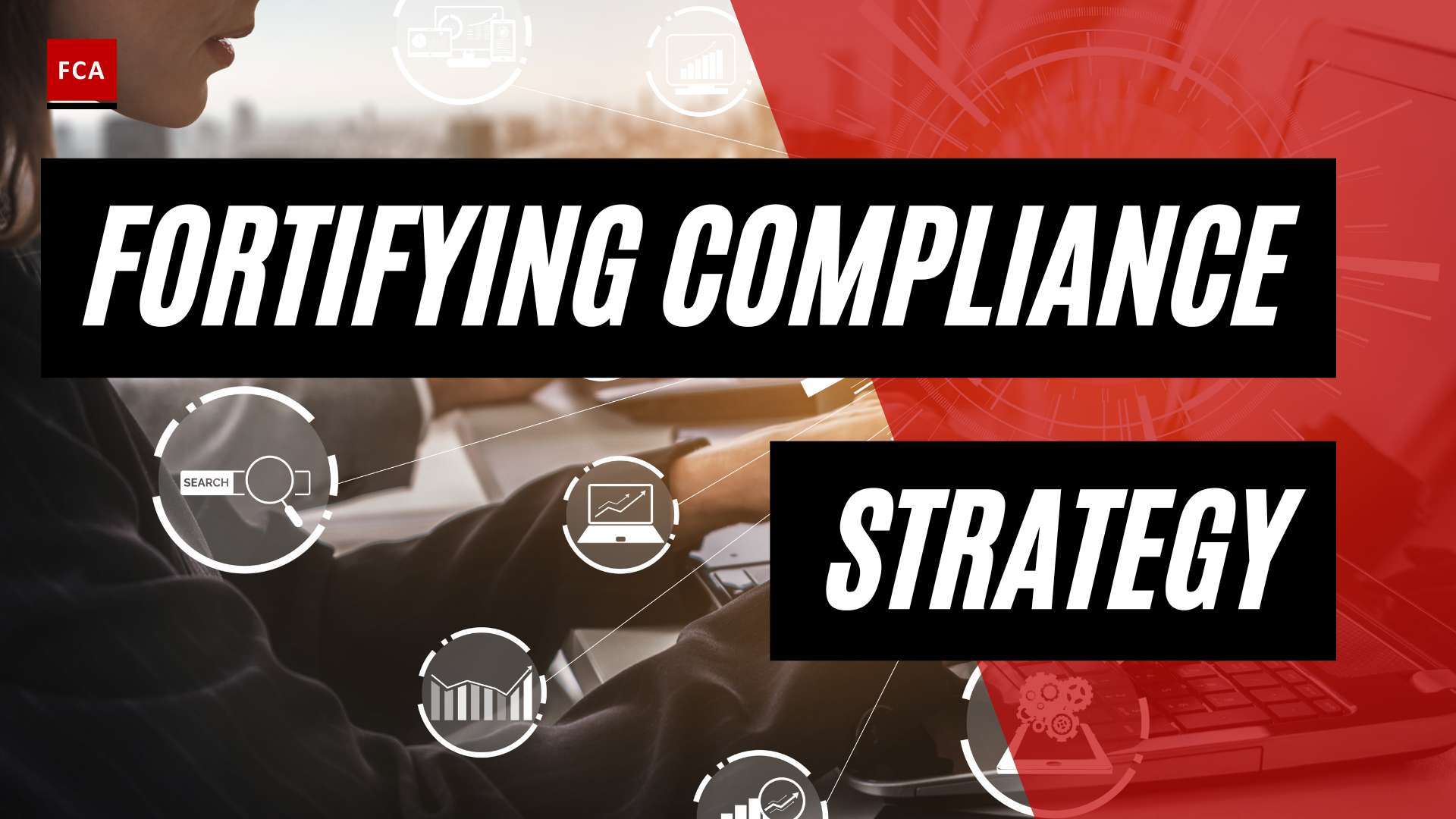Understanding AML Audit and Review
In the realm of AML (Anti Money Laundering) compliance, conducting thorough audits and reviews is essential to ensure financial integrity and prevent illicit activities. Let’s explore the importance of AML compliance and the role of AML audit and review.
Importance of AML Compliance
Money laundering, the process by which illegal funds are disguised as legitimate, poses a significant threat to businesses and economies worldwide. With advancements in technology, criminals have become more sophisticated in their attempts to launder money (Sanctions.io). To combat this, regulatory bodies have enforced stringent AML regulations and requirements.
Compliance with AML laws and regulations is not only a legal obligation but also crucial for protecting businesses from financial crime risks and reputational damage. It empowers organizations to detect and prevent money laundering, terrorist financing, and other illicit activities. By implementing robust AML measures, businesses can establish a strong defense against financial crimes and contribute to the overall integrity of the financial system.
Role of AML Audit and Review
AML audits and reviews play a vital role in ensuring compliance with AML laws and regulations, as well as mitigating financial crime risks. These audits evaluate the effectiveness of a company’s AML program and assess its adherence to regulatory requirements. Key components of AML audits include evaluating the AML program’s effectiveness, reviewing policies and procedures, and testing controls and training (Alessa).
By conducting AML audits, organizations can identify vulnerabilities in their AML programs and address any gaps or weaknesses. The audit process typically involves assessing the adequacy of risk assessment methodologies, evaluating transaction monitoring systems, reviewing customer due diligence processes, and ensuring proper reporting of suspicious activities to regulatory authorities.
The focus areas of AML audit encompass critical aspects of AML compliance, including transaction monitoring systems, customer due diligence processes, and the reporting of suspicious activities. These areas are of utmost importance in identifying potential risks and ensuring that organizations meet regulatory obligations (Alessa).
By conducting regular AML audits and reviews, businesses can achieve several benefits. Firstly, they ensure compliance with AML laws and regulations, protecting the organization from potential fines and sanctions. Secondly, these audits help in mitigating financial crime risks, safeguarding the organization’s assets and reputation. Finally, AML audits contribute to ongoing monitoring and continuous improvement, ensuring that the AML program remains effective and up to date.
In conclusion, AML compliance is of utmost importance in the fight against money laundering and financial crimes. AML audits and reviews serve as critical tools to assess the effectiveness of AML programs, identify vulnerabilities, and ensure compliance with regulatory requirements. By conducting thorough audits and reviews, organizations can strengthen their AML defenses, protect themselves from financial risks, and contribute to the integrity of the global financial system.
Conducting AML Risk Assessment
To ensure the integrity of financial systems and combat money laundering, organizations need to conduct AML risk assessments. These assessments help identify and mitigate risks associated with money laundering and terrorist financing. Two key aspects of conducting an AML risk assessment are understanding key risk indicators (KRIs) and complying with regulatory requirements.
Key Risk Indicators (KRIs)
Key Risk Indicators (KRIs) play a crucial role in the AML risk assessment process. They are used to evaluate and measure the likelihood of clients being involved in money laundering or terrorist financing. Some common KRIs include:
- Customer Risk: Assessing the risk associated with a customer based on factors such as their occupation, country of residence, and transaction history.
- Geographic Location Risk: Evaluating the risk associated with a particular geographic location, considering factors like the presence of high-risk jurisdictions or politically unstable regions.
- Product/Services Risk: Analyzing the risk associated with specific products or services offered by the organization, considering their potential vulnerability to money laundering activities.
- Transaction Review: Monitoring and reviewing transactions for any suspicious activities or patterns that may indicate money laundering.
- Customer Base Risk: Assessing the overall risk associated with the customer base of an organization, taking into account factors like the percentage of high-risk customers or politically exposed persons (PEPs).
By considering these KRIs, organizations can gain valuable insights into potential risks and develop appropriate risk mitigation strategies. It is important to regularly review and update these indicators to reflect changes in the risk landscape and ensure the effectiveness of the risk assessment process.
Regulatory Requirements for AML Risk Assessment
Regulatory requirements play a fundamental role in AML risk assessment. Financial institutions are obligated to comply with various laws and regulations to prevent money laundering and terrorist financing. Some important regulatory requirements include:
- Bank Secrecy Act (BSA): Under the BSA, companies are required to implement measures to mitigate money laundering risks at an individual level. This includes conducting an AML risk assessment to identify and assess risks associated with money laundering activities.
- Office of Foreign Assets Control (OFAC): OFAC mandates organizations to implement risk management programs that include sanctions screenings and other analyses to identify and mitigate risks associated with money laundering and terrorist financing.
To comply with these regulations, organizations must develop a robust AML risk assessment process. This involves considering the size, complexity, business model, customers, products, services, and geographic locations of the institution. The risk assessment should be documented, reviewed, and updated at least annually to reflect the changing risk landscape and ensure continued compliance.
By conducting a comprehensive AML risk assessment that incorporates KRIs and meets regulatory requirements, organizations can effectively identify and mitigate risks associated with money laundering and terrorist financing. This proactive approach is essential for maintaining financial integrity and safeguarding against illicit financial activities.
Components of AML Audit
An effective AML audit involves several key components that assess the overall integrity of an organization’s anti-money laundering program. These components include evaluating AML program effectiveness, reviewing policies and procedures, and testing controls and training.
Evaluating AML Program Effectiveness
Evaluating the effectiveness of an organization’s AML program is a critical component of the audit process. It involves assessing the implementation and adherence to the AML policies, procedures, and internal controls put in place to combat money laundering and other financial crimes. This evaluation helps determine if the program is operating efficiently and effectively.
During the evaluation, auditors analyze the organization’s risk assessment methodologies, transaction monitoring systems, customer due diligence processes, and the reporting of suspicious activities to regulatory authorities. By assessing these elements, auditors can identify any vulnerabilities or gaps in the program’s design or implementation. They also ensure that the program aligns with the regulatory requirements and industry best practices.
Reviewing Policies and Procedures
Reviewing the organization’s AML policies and procedures is crucial to ensure they are comprehensive, up-to-date, and in compliance with regulatory requirements. This component of the audit assesses the adequacy and effectiveness of the organization’s documentation in guiding employees on AML compliance.
Auditors examine the policies and procedures to verify that they cover key areas such as customer due diligence, record-keeping, transaction monitoring, and reporting of suspicious activities. They also assess if the policies and procedures are communicated effectively across the organization and understood by relevant personnel.
Testing Controls and Training
Testing the controls and training within an organization is essential to determine their effectiveness in preventing and detecting money laundering activities. Auditors assess whether the controls in place are designed to mitigate the identified AML risks effectively.
This component involves conducting interviews with key personnel responsible for AML compliance, reviewing documentation, and performing testing procedures. Auditors examine the training programs provided to employees to ensure they adequately cover AML regulations and procedures. They also assess if the controls are consistently applied and monitored.
By testing controls and training, auditors aim to identify any weaknesses or gaps that may exist within the organization’s AML compliance framework. This helps to strengthen the effectiveness of the program and minimize the risk of non-compliance with AML laws and regulations.
By evaluating AML program effectiveness, reviewing policies and procedures, and testing controls and training, organizations can enhance their AML compliance efforts and ensure the integrity of their financial systems. These components of the AML audit play a crucial role in safeguarding against money laundering and protecting the organization’s reputation.
Focus Areas of AML Audit
When conducting an AML audit, there are specific focus areas that require thorough examination to ensure compliance and mitigate financial crime risks. These focus areas include transaction monitoring systems, customer due diligence processes, and the reporting of suspicious activities.
Transaction Monitoring Systems
Transaction monitoring systems play a crucial role in detecting and reporting potentially suspicious activities. During the AML audit, these systems are evaluated to assess their effectiveness in identifying transactions that may be indicative of money laundering or other illicit activities. The audit examines whether the transaction monitoring systems are appropriately calibrated to identify unusual patterns or high-risk transactions.
The audit also assesses the accuracy and timeliness of alerts generated by the system, as well as the processes in place for investigating and escalating those alerts. It is essential for financial institutions to ensure that their transaction monitoring systems are robust, capable of handling a high volume of transactions, and regularly updated to adapt to evolving money laundering techniques.
Customer Due Diligence Processes
Another key focus area of the AML audit is the evaluation of customer due diligence (CDD) processes. These processes involve the collection and verification of customer information to assess and manage money laundering and terrorist financing risks. The audit examines whether the CDD procedures are adequately designed and implemented to identify and verify the identities of customers.
The audit also assesses the risk assessment methodology used by the institution to categorize customers based on their level of risk. This includes evaluating whether enhanced due diligence measures are applied to high-risk customers and whether ongoing monitoring of customer activity is conducted effectively.
Reporting of Suspicious Activities
The reporting of suspicious activities is a critical aspect of AML compliance. During the audit, the reporting processes and procedures are carefully reviewed to ensure that any suspicions of money laundering or terrorist financing are promptly reported to the appropriate authorities. The audit assesses the effectiveness of the institution’s policies and procedures for suspicious activity reporting (SAR) and evaluates the timeliness and quality of SAR filings.
Furthermore, the audit examines whether the institution has established a robust governance framework to oversee the SAR process, including the designation of responsible individuals and the establishment of clear escalation procedures. It is essential for financial institutions to have a well-defined SAR process in place to ensure compliance with regulatory requirements.
By focusing on transaction monitoring systems, customer due diligence processes, and the reporting of suspicious activities, AML audits provide a comprehensive review of key areas essential for effective AML compliance. These audits help financial institutions identify any weaknesses or gaps in their AML programs, enabling them to take appropriate measures to strengthen their anti-financial crime framework.
Benefits of AML Audit Risk Assessment
Conducting thorough AML audit risk assessments offers several important benefits for financial institutions. These assessments are essential for ensuring compliance with AML laws and regulations, mitigating financial crime risks, and protecting reputation to avoid penalties.
Compliance with AML Laws and Regulations
AML compliance regulations are established by various governmental financial regulatory bodies worldwide, such as the Financial Crimes Enforcement Network (FinCEN) in the U.S. These regulations ensure that financial institutions adhere to specific standards and requirements to combat money laundering effectively (Investopedia). By performing AML audit risk assessments, organizations can evaluate their compliance with these regulations and identify any potential gaps or areas for improvement.
Regular AML audits help financial institutions demonstrate their commitment to upholding AML laws and regulations. They provide an opportunity to assess the effectiveness of the institution’s AML program and identify any weaknesses or deficiencies that need to be addressed. By actively engaging in AML audit risk assessments, financial institutions can maintain compliance, reduce regulatory risks, and establish a strong foundation for combating money laundering.
Mitigating Financial Crime Risks
The primary objective of AML audit risk assessments is to identify and mitigate financial crime risks. Money laundering and other illicit activities pose significant threats to the integrity of the financial system. By conducting thorough assessments, financial institutions can identify vulnerabilities and implement appropriate controls to prevent and detect potential money laundering activities.
Through robust risk assessments, financial institutions can identify high-risk areas within their operations and take proactive measures to mitigate those risks. This may involve enhancing transaction monitoring systems, improving customer due diligence processes, and strengthening reporting mechanisms for suspicious activities. By addressing these risks, financial institutions can protect themselves and their customers from the potential consequences of financial crimes.
Protecting Reputation and Avoiding Penalties
Maintaining a strong reputation is crucial for financial institutions. Failure to comply with AML laws and regulations can result in severe penalties, including fines, loss of reputation, and potential legal consequences (Investopedia). AML audit risk assessments provide financial institutions with the opportunity to assess their compliance measures and identify any deficiencies that could lead to non-compliance.
By proactively identifying and addressing compliance gaps through regular AML audits, financial institutions can protect their reputation and avoid the negative consequences associated with non-compliance. Additionally, demonstrating a commitment to strong AML practices can enhance customer trust and attract new clients who prioritize working with institutions that prioritize financial integrity.
In summary, AML audit risk assessments play a vital role in ensuring compliance, mitigating financial crime risks, and protecting the reputation of financial institutions. By conducting these assessments, organizations can maintain adherence to AML laws and regulations, reduce the likelihood of financial crimes, and safeguard their standing within the industry. Through continuous monitoring and improvement, financial institutions can establish a strong foundation for maintaining financial integrity.
Best Practices for AML Audit Preparation
To ensure a smooth and effective AML audit, it is essential to follow best practices for preparation. By establishing an AML audit team, conducting risk assessments, and providing training and awareness, organizations can strengthen their AML compliance efforts and mitigate the risk of financial crime.
Establishing an AML Audit Team
Establishing a dedicated AML audit team is a vital first step in preparing for an AML audit. This team should consist of individuals with expertise in compliance, risk management, and anti-money laundering. Their responsibilities include conducting internal audits, reviewing AML policies and procedures, and ensuring compliance with regulatory requirements.
The AML audit team should be knowledgeable about AML audit requirements and have a thorough understanding of the organization’s AML program. They should work closely with other departments, such as legal and operations, to gather relevant information and ensure effective coordination during the audit process.
Conducting Risk Assessments
Conducting regular risk assessments is crucial for identifying and managing AML risks. A comprehensive risk assessment helps organizations understand their vulnerabilities, prioritize areas for improvement, and allocate resources effectively.
Key risk indicators (KRIs) play a crucial role in AML risk assessment. These indicators help organizations identify and monitor potential risks, such as unusual transaction patterns or high-risk customer profiles. By using AML audit checklists and leveraging relevant data, organizations can assess their level of risk exposure and implement appropriate mitigation measures.
Providing Training and Awareness
Proper training and awareness programs are essential for fostering a culture of compliance within an organization. Employees should receive regular training on AML policies, procedures, and regulatory requirements. This training should cover topics such as customer due diligence, transaction monitoring, and reporting of suspicious activities.
Training sessions can take various forms, including in-person workshops, online courses, and educational materials. It is important to tailor the training to different job roles and departments within the organization to ensure relevance and effectiveness. By providing ongoing training and fostering awareness, organizations can empower their employees to detect and prevent potential money laundering activities.
Internal links:
By following these best practices for AML audit preparation, organizations can enhance their AML compliance efforts and strengthen their defense against financial crime. The establishment of an AML audit team, conducting regular risk assessments, and providing comprehensive training and awareness are critical steps towards maintaining financial integrity and safeguarding against money laundering risks.
Conducting an Effective AML Audit
To ensure the effectiveness of an AML audit and promote financial integrity, it is essential to approach the process with thoroughness and attention to detail. The following three aspects are crucial for conducting an effective AML audit: preparing documentation, fostering cooperation and communication, and responding to findings.
Preparing Documentation
Documentation plays a vital role in an AML audit, serving as evidence of an organization’s compliance efforts and providing a foundation for the audit process. It is important to gather and organize all relevant documentation, including AML policies, procedures, risk assessments, training materials, and AML audit checklists. These documents should be easily accessible, well-structured, and up-to-date.
By having comprehensive and well-documented AML procedures in place, organizations can demonstrate their commitment to compliance and facilitate the audit process. Internal processes, controls, and reporting mechanisms should be clearly outlined to ensure a thorough evaluation of the AML program’s effectiveness.
Fostering Cooperation and Communication
Effective cooperation and communication among different stakeholders are crucial for the success of an AML audit. This includes collaboration between the AML audit team, compliance officers, risk management personnel, and other relevant departments within the organization. Open lines of communication ensure that all parties involved understand the objectives, scope, and expectations of the audit.
Regular communication helps to address any concerns or questions that may arise during the audit process. It also enables the exchange of information and insights, allowing for a more accurate assessment of the organization’s AML program. By fostering a cooperative environment, organizations can work together to identify areas for improvement and implement necessary changes.
Responding to Findings
During the AML audit, findings and recommendations may be identified. It is crucial to respond promptly and proactively to these findings to address any deficiencies and enhance the organization’s AML program. Organizations should have a well-defined process in place to document and track findings, assign responsibility for corrective actions, and establish timelines for implementation.
Responding effectively to findings involves developing remediation plans that address identified weaknesses or gaps in the AML program. These plans should incorporate specific actions and strategies to strengthen controls, enhance training, and improve processes. Regular monitoring and follow-up are essential to ensure the timely and effective implementation of these remedial measures.
By consistently documenting, fostering cooperation, and responding to findings, organizations can enhance their AML audit processes, strengthen their AML compliance efforts, and mitigate the risks associated with financial crimes. It is essential to view the AML audit as an opportunity to identify areas for improvement and promote ongoing vigilance against money laundering and other illicit activities.
Post-Audit Activities
Once the AML audit is completed, it is essential to undertake post-audit activities to ensure the effectiveness of the audit process and strengthen the organization’s anti-money laundering (AML) compliance program. These activities include reviewing and analyzing audit results, implementing remediation plans, and establishing measures for ongoing monitoring and continuous improvement.
Reviewing and Analyzing Audit Results
Reviewing and analyzing the audit results is a crucial step in the post-audit process. This involves carefully examining the findings and recommendations provided in the AML audit report. The audit report serves as a comprehensive summary of the audit findings, highlighting areas of non-compliance, weaknesses in controls, and potential areas for improvement.
During the review process, it is important to assess the severity and significance of the identified issues. This allows organizations to prioritize their remediation efforts based on the level of risk. By thoroughly analyzing the audit results, organizations can gain valuable insights into their AML compliance program’s strengths and weaknesses.
Implementing Remediation Plans
Implementing remediation plans is a critical step in addressing the deficiencies and weaknesses identified during the audit. Remediation plans outline the specific actions and measures that need to be taken to rectify the issues and improve the overall AML compliance program.
Remediation plans should be comprehensive and tailored to address each specific finding in the audit report. This may involve revising policies and procedures, enhancing internal controls, providing additional training to staff, or implementing new technologies to strengthen transaction monitoring systems and customer due diligence processes.
To ensure the successful implementation of remediation plans, organizations should establish clear responsibilities and timelines for each action item. Regular monitoring and reporting on the progress of remediation efforts are essential to track the effectiveness of the implemented measures.
Ongoing Monitoring and Continuous Improvement
Ongoing monitoring and continuous improvement are essential to maintaining a robust and effective AML compliance program. After the audit, organizations should establish mechanisms for continuous monitoring, including periodic assessments and AML compliance reviews.
Monitoring activities should focus on evaluating the effectiveness of the implemented remediation plans and identifying any emerging risks or changes in regulatory requirements. This can be achieved through regular internal reviews, self-assessments, and independent audits to ensure compliance with evolving AML laws and regulations.
Continuous improvement involves making necessary adjustments and enhancements to strengthen the AML compliance program. This may include refining policies and procedures, providing additional training to staff, or adopting new technologies to enhance the effectiveness of transaction monitoring systems and customer due diligence processes.
By embracing ongoing monitoring and continuous improvement, organizations can proactively identify and address any weaknesses or gaps in their AML compliance program. This helps to ensure that the organization remains resilient against financial crime risks and maintains a high level of integrity in its financial operations.
In conclusion, post-audit activities play a vital role in reinforcing the organization’s commitment to AML compliance. By reviewing and analyzing audit results, implementing remediation plans, and establishing mechanisms for ongoing monitoring and continuous improvement, organizations can strengthen their AML compliance efforts, mitigate financial crime risks, and safeguard their reputation.








